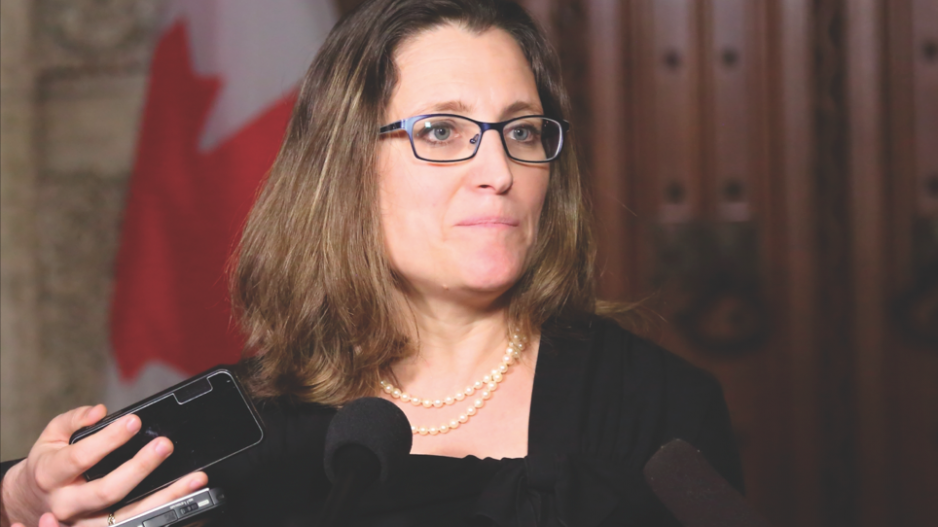Despite better-than-expected economic conditions, Canadians may be facing sticker shock when Finance Minister Chrystia Freeland delivers a fiscal update to the House of Commons Monday (November 30).
Economists at RBC estimate the 2020-21 deficit will reach close to $370 billion, exceeding the $343 billion former finance minister Bill Morneau offered in July.
The update will be the first since Freeland took over from Morneau following his resignation amid the WE Charity scandal.
The $27 billion difference between those estimates come even as the national unemployment rate has fallen to 8.9% from the 2020 high of 13.7% back in May.
RBC anticipates the federal government will extend some of its existing support, such as the wage subsidy for businesses or the Canada Recovery Benefit for workers facing diminished incomes.
Economist Colin Guldimann estimates such measures could add up to $40 billion by the end of 2021.
“We expect sizeable but more manageable deficits around $35 billion per year thereafter, if COVID-19 spending winds down,” he said in a RBC report released Friday (November 27).
“We already see some stimulus bleeding into next year, with current announcements bringing the deficit to at least $90 billion in 2021-21.”
The bank itself is more bullish on the economy for 2020 after forecasting in the summer the GDP would decline 6.8% this year.
It now pegs the annual decline of GDP at 5.6%.
“We expect new business supports to be targeted at industries that have been hard hit and are likely to continue feeling a squeeze even after a vaccine is widely distributed (e.g., transportation, tourism, and the energy sector),” Guldimann said.
“So we may see enhancements to the flagship wage subsidy for locked-down businesses mirroring the lockdown support in the new rent subsidy or more targeted public investments like those in energy-sector environmental projects.”
But he said those changes would be costly, with a 25% lockdown top-up to the wage subsidy adding up to more than $5 billion if more widespread lockdowns ensue amid surging cases of COVID-19.
“We worry little about whether the government can sustain a massive deficit this year — it can, given low debt levels entering the crisis and historically low interest rates. But now that it has no fiscal guardrails, there’s risk debt-to-GDP will continue to rise in the medium term if it continues to spend ambitiously,” Guldimann said.
“The government may be tempted to add new revenue sources to help fund future spending ambitions. That would be misguided given the fragility of the recovery.”




